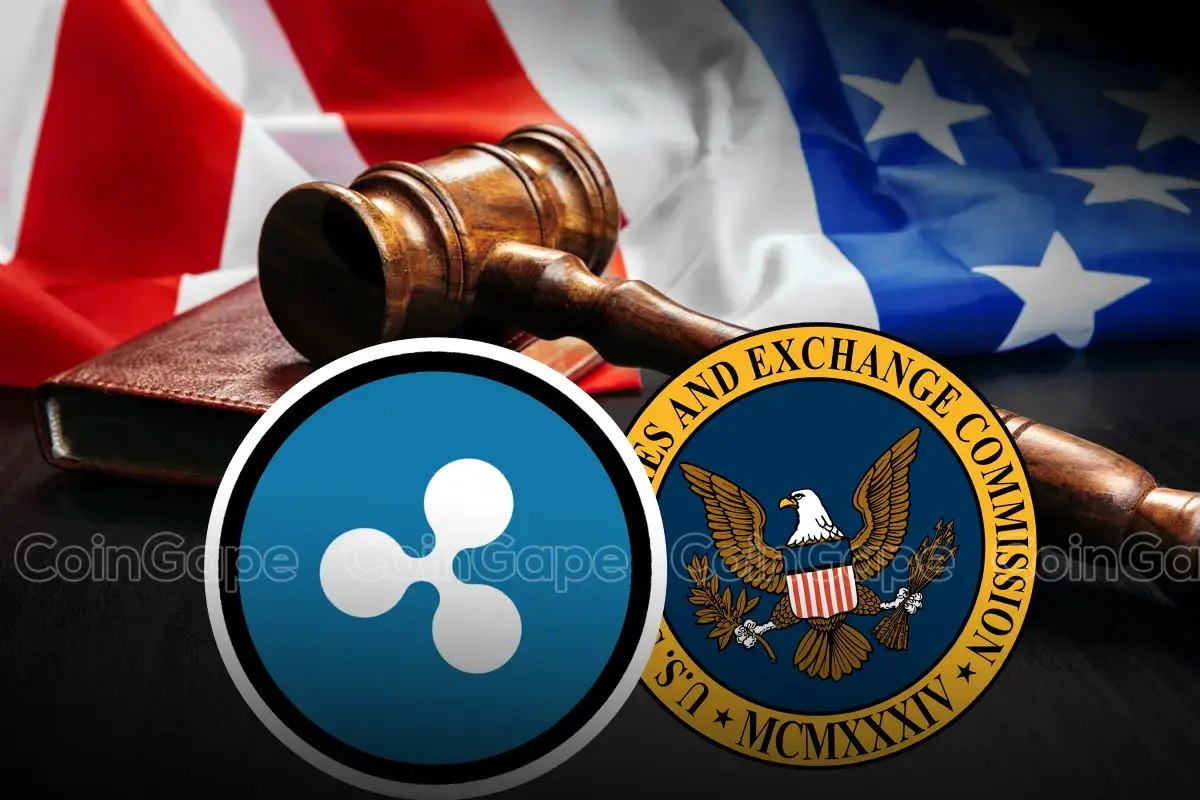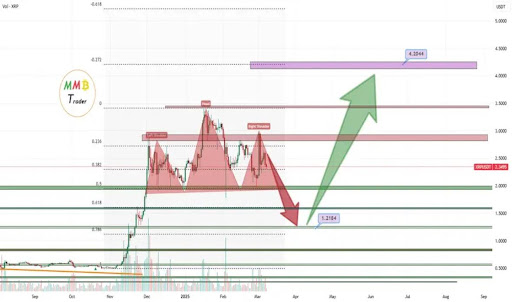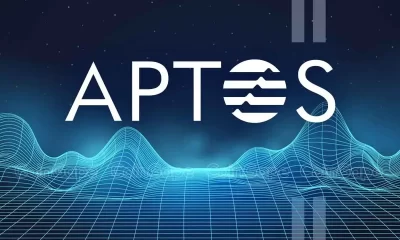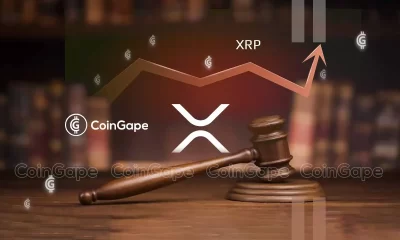Ethereum
How SenseiNode Is Building Proof-of-Stake Infrastructure in Latin America
Published
2 weeks agoon
By
admin

A lot of attention is paid to the decentralization of the Bitcoin network.
Bitcoin miners should set up shop in a number of different jurisdictions in order to prevent any kind of regulatory capture of the network, so the thinking goes. Some members of the crypto community even saw China’s 2021 crypto ban as a positive because it forced mining operations — up until then clustered in the Middle Kingdom — to spread out to various other continents.
That discourse isn’t as prevalent when it comes to Proof-of-Stake networks like Ethereum and Solana, but staking firm SenseiNode aims to make such blockchains as resilient as possible by spinning up validator infrastructure in Latin America.
“When we started, 99% of nodes were located in Europe, the US and some in Asia,” SenseiNode CEO Pablo Larguia told CoinDesk in an interview. “We were the first to bring geographic and jurisdictional decentralization to Latin America.”
With roughly $800 million worth of assets staked through its platform, SenseiNode is the 15th largest staking firm globally. The largest of them, Kiln, manages over $7 billion.
SenseiNode operates in various Latin American countries, including Brazil, Argentina, Mexico, Chile, Costa Rica and Colombia. It also has nodes set up in the U.S. and Germany. The common point in all of these jurisdictions is that SenseiNode uses local and regional data centers.
“Most of the nodes in the US and Europe are hosted in Amazon Web Services. At the end of the day, that’s a point of centralization,” Larguia said.
Data centers in Latin America usually aren’t as advanced as Western ones, however, which has forced SenseiNode to take on an educational role in some cases and help build the necessary infrastructure to run staking services.
Read more: Staked Ether Is Creating a Benchmark for the Crypto Economy, Says ARK Invest
Requirements for running nodes vary from protocol to protocol, Larguia said. For example, some projects may have larger storage requirements if their blockchain history is older.
Node costs also differ. You only need $300 per month to run an Ethereum validator, while a Solana validator will cost $800 per month. However, there are no limits to how many tokens you can delegate to a single Solana validator, contrary to Ethereum validators, which are limited to 32 ETH each. Ethereum staking is therefore more expensive to handle for SenseiNode than Solana staking.
“For Polkadot and Avalanche, we have like two or three nodes, but for Ethereum we have like 9,000,” Larguia said.
Source link
You may like


This Week in Bitcoin: Strategy Stalls, But White House Plans to Buy More BTC


Layer3 (L3) Price Prediction March 2025, 2026, 2030, 2040


Ripple Token Zooms 5% Higher as Bitcoin Grapples With $84K Level


Bitcoin’s megaphone pattern, explained: How to trade it


This Rare Bitcoin Buy Signal Could Ignite Next BTC Rally


There’s a Good Chance the Bull Cycle’s Over if Bitcoin Plunges to This Level, Warns Analyst Benjamin Cowen
ETH
‘Welcome to Pain’ – Analyst Benjamin Cowen Says Ethereum Mirroring 2019 Market Cycle’s Playbook
Published
2 days agoon
March 14, 2025By
admin
A popular crypto analyst thinks Ethereum (ETH) will have to endure some “pain” before rebounding.
In a new YouTube video, Benjamin Cowen tells his 886,000 subscribers that there probably needs to be a change in monetary policy in order for ETH’s chart against Bitcoin (BTC) to bottom.
“But in order to have a change in monetary policy, you have to have pain. Welcome to the pain. This is the pain that you ultimately need. Remember last cycle [in 2019], ETH/Bitcoin bottomed after ETH/USD broke support.”
Cowen notes that ETH fell below its support level against the US dollar in 2019 right before the Federal Reserve ended quantitative tightening.
The analyst says that everything that happened in the previous cycle is “basically happening this cycle, it’s just taking place on a longer timeframe.” Cowen also notes that most of the price points of the current cycle are roughly 10x what they were in the 2019 market.
“The reason why people are having a hard time navigating this cycle and why it feels so different is because monetary policy never changed this cycle. In the last cycle, we saw a change in monetary policy in the pre-halving year. We’re now in the post-halving year and we still haven’t seen a change to the quantitative tightening. We’ve seen them taper it a little bit. They’ve slowed it down, but they’ve never actually stopped it.”
ETH is trading at $1,907 at time of writing. The second-ranked crypto asset by market cap is down more than 1% in the past 24 hours.
Don’t Miss a Beat – Subscribe to get email alerts delivered directly to your inbox
Check Price Action
Follow us on X, Facebook and Telegram
Surf The Daily Hodl Mix
 

Disclaimer: Opinions expressed at The Daily Hodl are not investment advice. Investors should do their due diligence before making any high-risk investments in Bitcoin, cryptocurrency or digital assets. Please be advised that your transfers and trades are at your own risk, and any losses you may incur are your responsibility. The Daily Hodl does not recommend the buying or selling of any cryptocurrencies or digital assets, nor is The Daily Hodl an investment advisor. Please note that The Daily Hodl participates in affiliate marketing.
Generated Image: Midjourney
Source link
24/7 Cryptocurrency News
XRP and Ethereum Status In View as Ripple SEC Lawsuit
Published
2 days agoon
March 13, 2025By
admin
The XRP community is anticipating the potential announcement of the settlement of the lawsuit filed by the US Securities and Exchange Commission (SEC) against Ripple Labs Inc. As the settlement negotiation progresses, new updates on the causes of delays have emerged. According to Fox Business Senior Correspondent Charles Gasparino, the Ethereum ICO might be a factor in determining the settlement terms.
The Ethereum Reference in Ripple SEC Lawsuit
As stated in a scoop on X, Gasparino said one of the primary issues under consideration is how XRP will be classified after the lawsuit. According to him, the parties are exploring whether it will trade as a utility, thus removing the securities tag.
Citing his anonymous sources, Gasparino noted that Ethereum is a major example of being profiled. In its earlier days, it also conducted an Initial Coin Offering (ICO) like XRP. The scoop also noted that the characteristics of its issuance were not different from that of XRP. Both protocols raised money to finance the development of a platform.
Despite this, Ripple Labs was sued by the US SEC as the claims hinged on how Ethereum had morphed into a commodity. According to the update, the market regulator is considering whether it can make a similar commodity case for XRP.
Community Reacts to the New Ripple SEC Lawsuit Update
Recall that the potential XRP lawsuit settlement news came earlier this week after Eleanor Terrett confirmed internal talks. However, the latest updates have triggered a new round of reactions from the community.
Ripple Labs CTO David Schwartz explained the disadvantages of XRP. He noted that, unlike XRP, ETH was privately sold by an issuer before any innovator designed a ledger or blockchain.
Other community members have also argued the case for XRP, noting that the coin is not a security. Experts noted that once these conditions are ironed out, Ripple Labs may also see its case settled as the regulator closed the Coinbase lawsuit earlier this month.
Potential Implications of the XRP Lawsuit Dismissal
Despite the lingering legal battle, many asset managers have moved to launch XRP-based exchange-traded funds in the US. Considering the complexity of its security status, Bloomberg Senior ETF Analysts Eric Balchunas and James Seyffart pegged the XRP ETF approval odds at 60%.
If this lawsuit is resolved in the coming weeks, it might boost the odds of approval of the XRP ETF soon. In addition, the case dismissal can trigger a massive XRP price rally, per an earlier CoinGape analysis.
Godfrey Benjamin
Benjamin Godfrey is a blockchain enthusiast and journalists who relish writing about the real life applications of blockchain technology and innovations to drive general acceptance and worldwide integration of the emerging technology. His desires to educate people about cryptocurrencies inspires his contributions to renowned blockchain based media and sites. Benjamin Godfrey is a lover of sports and agriculture.
Disclaimer: The presented content may include the personal opinion of the author and is subject to market condition. Do your market research before investing in cryptocurrencies. The author or the publication does not hold any responsibility for your personal financial loss.
Source link
Bitcoin
This Crypto Analyst Correctly Predicted XRP Price Crash Below $2, Here’s The Rest Of The Forecast
Published
2 days agoon
March 13, 2025By
admin
Reason to trust

Strict editorial policy that focuses on accuracy, relevance, and impartiality
Created by industry experts and meticulously reviewed
The highest standards in reporting and publishing
Strict editorial policy that focuses on accuracy, relevance, and impartiality
Morbi pretium leo et nisl aliquam mollis. Quisque arcu lorem, ultricies quis pellentesque nec, ullamcorper eu odio.
A new XRP price forecast has emerged, offering insights into the cryptocurrency’s next bearish move. A crypto analyst who previously predicted XRP‘s crash below $2 has provided a more comprehensive outlook, outlining key support and resistance areas that will determine XRP’s next target.
According to TradingView crypto analyst, ‘MMBTrader,’ the XRP price is set to dump below the $2 threshold. As of writing, CoinMarketCap reports that XRP is trading at $2.2, reflecting a modest 3% increase in value in the last 24 hours.
XRP Price Projected To Crash To $1.5
Related Reading
The TradingView crypto expert has identified a Head and Shoulder pattern on the XRP daily chart, consisting of three peaks: left shoulder, head, and right shoulder. Typically, a classic Head and Shoulder pattern is considered one of the most common indicators of a potential price breakdown, with the price of a cryptocurrency expected to reverse from bullish to bearish.

Looking at the price chart, a break below the pattern’s neckline around the $1.95 price point would confirm XRP’s bearish position. If the cryptocurrency fails to hold the $1.95 support level, a sharp drop, possibly up to 50%, is expected. This massive crash would effectively place the price around the $1.5 level or even as low as $1.2.
While he expects a possible crash to $1.5, MMBTrader also projects an alternative bullish scenario in which the XRP price initiates a strong rebound. The analyst revealed that if the cryptocurrency consolidates near $2 without breaking lower, then a bounce to new highs could follow.
Additionally, the TradingView expert believes that the asset could also experience a significant rally toward $5 after its projected 50% price crash. He highlights that if XRP can hold the support level near $1.5, then a strong reversal could occur, potentially triggering a bullish move between $4 and $4.5.
Whales Scoop Up $385 Million Amid Market Downtrend
While XRP experiences slow momentum due to the market’s recent decline, whales are seizing the opportunity to buy the dip, accumulating a significant amount of the token. According to crypto analyst Brett, an XRP whale has executed a large-scale transaction, buying over 167 million XRP, valued at $368.4 million, in a single purchase.
Related Reading
Brett revealed that this whale purchase was made as the market panicked over increasing volatility and price declines. Over the past few weeks, XRP has struggled to recover from bearish trends, joining the ranks of top cryptocurrencies like Bitcoin and Ethereum, which recorded a major price crash earlier in February.
CoinMarketCap’s data shows that the the altcoin’s price has fallen by 11.6% in just one week. This decline comes as the broader crypto market faces massive liquidations totaling hundreds of millions of dollars.
Featured image from Adobe Stock, chart from Tradingview.com
Source link

This Week in Bitcoin: Strategy Stalls, But White House Plans to Buy More BTC

Layer3 (L3) Price Prediction March 2025, 2026, 2030, 2040

Ripple Token Zooms 5% Higher as Bitcoin Grapples With $84K Level

Bitcoin’s megaphone pattern, explained: How to trade it
Is Bitcoin Price Headed For $70,000 Or $300,000? What The Charts Are Saying

This Rare Bitcoin Buy Signal Could Ignite Next BTC Rally

There’s a Good Chance the Bull Cycle’s Over if Bitcoin Plunges to This Level, Warns Analyst Benjamin Cowen

Ethena overtakes PancakeSwap and Jupiter with $3.28m daily revenue

Gold ETFs Winning the Asset Race With Bitcoin Funds–for Now

BTC Regains $84K; ETH, XRP, SOL Pump

Court Approves 3AC’s $1.53B Claim Against FTX, Setting Up Major Creditor Battle

Sacks and his VC firm sold over $200M in crypto and stocks before WH role
Polkadot (DOT) Price Stability Fuels Hopes For Short-Term Recovery

Bitcoin Is A Strategic Asset, Not XRP

Bank of America Insider Helps Criminals and Illicit Businesses Launder Funds in Massive Global Conspiracy: US Department of Justice

Arthur Hayes, Murad’s Prediction For Meme Coins, AI & DeFi Coins For 2025

Expert Sees Bitcoin Dipping To $50K While Bullish Signs Persist

Aptos Leverages Chainlink To Enhance Scalability and Data Access

Bitcoin Could Rally to $80,000 on the Eve of US Elections

Institutional Investors Go All In on Crypto as 57% Plan to Boost Allocations as Bull Run Heats Up, Sygnum Survey Reveals

Sonic Now ‘Golden Standard’ of Layer-2s After Scaling Transactions to 16,000+ per Second, Says Andre Cronje

Crypto’s Big Trump Gamble Is Risky

Ripple-SEC Case Ends, But These 3 Rivals Could Jump 500x

A16z-backed Espresso announces mainnet launch of core product

Has The Bitcoin Price Already Peaked?

Xmas Altcoin Rally Insights by BNM Agent I

Blockchain groups challenge new broker reporting rule

Trump’s Coin Is About As Revolutionary As OneCoin

Ripple Vs. SEC, Shiba Inu, US Elections Steal Spotlight

Is $200,000 a Realistic Bitcoin Price Target for This Cycle?
Trending

 24/7 Cryptocurrency News4 months ago
24/7 Cryptocurrency News4 months agoArthur Hayes, Murad’s Prediction For Meme Coins, AI & DeFi Coins For 2025

 Bitcoin2 months ago
Bitcoin2 months agoExpert Sees Bitcoin Dipping To $50K While Bullish Signs Persist

 24/7 Cryptocurrency News2 months ago
24/7 Cryptocurrency News2 months agoAptos Leverages Chainlink To Enhance Scalability and Data Access

 Bitcoin4 months ago
Bitcoin4 months agoBitcoin Could Rally to $80,000 on the Eve of US Elections

 Bitcoin4 months ago
Bitcoin4 months agoInstitutional Investors Go All In on Crypto as 57% Plan to Boost Allocations as Bull Run Heats Up, Sygnum Survey Reveals

 Altcoins1 month ago
Altcoins1 month agoSonic Now ‘Golden Standard’ of Layer-2s After Scaling Transactions to 16,000+ per Second, Says Andre Cronje

 Opinion4 months ago
Opinion4 months agoCrypto’s Big Trump Gamble Is Risky

 Price analysis4 months ago
Price analysis4 months agoRipple-SEC Case Ends, But These 3 Rivals Could Jump 500x



✓ Share: